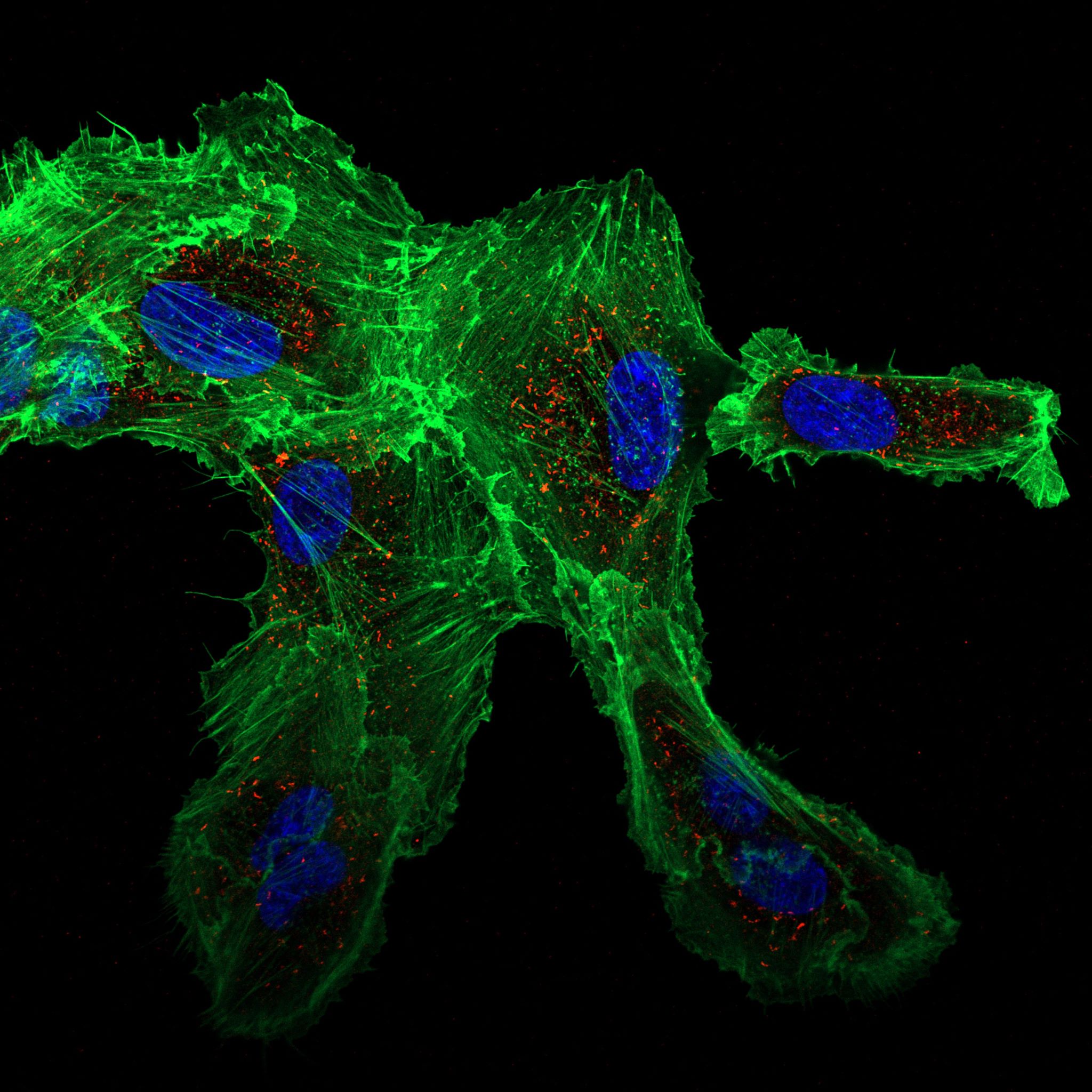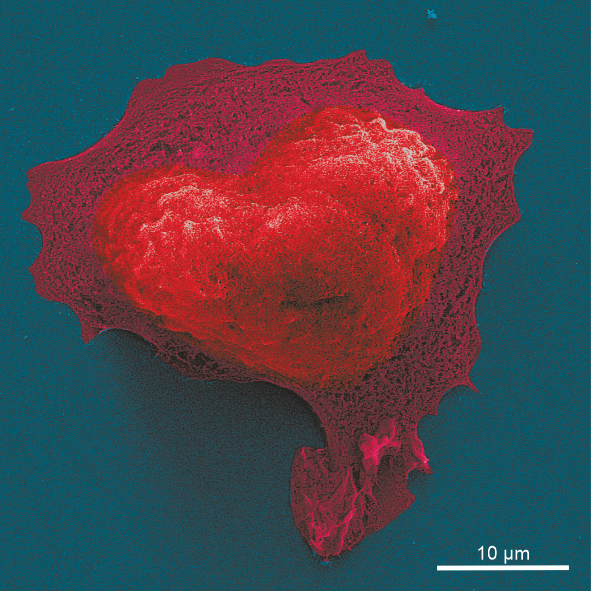We are an interdisciplinary workgroup in the field of cellular biophysics. Topics of our research include the role of the cytoskeleton (especially actin and vimentin) in cell migration, - mechanics, and cellular adhesion and polarity. In order to examine cellular behavior we use different types of microfabrication as well as different microscopy types (bright field microscopy, fluorescence microscopy, time lapse microscopy, super resolution techniques (e.g. TIRF, STORM, and atomic force microscopy) as well as laser techniques to investigate cellular dynamics (FRAP, Laserablation).
.png)
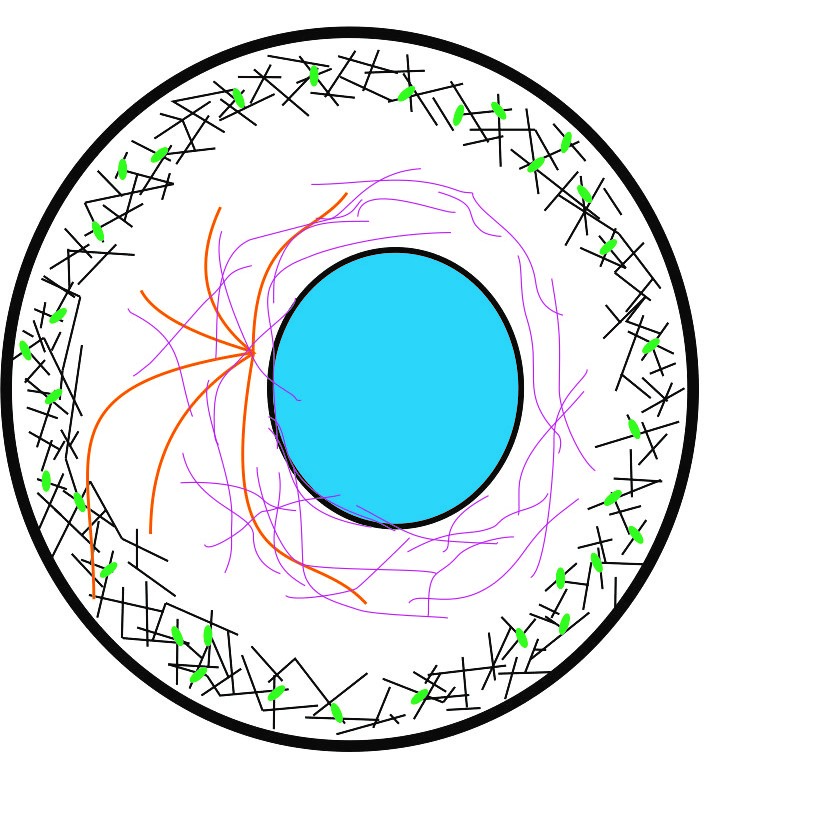
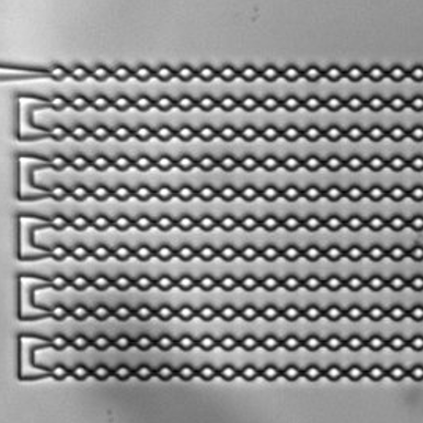
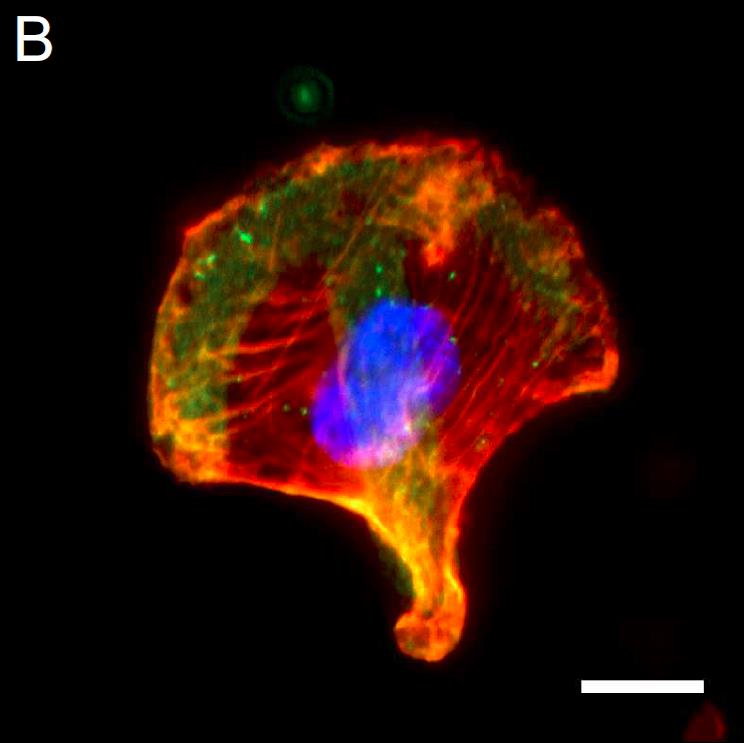
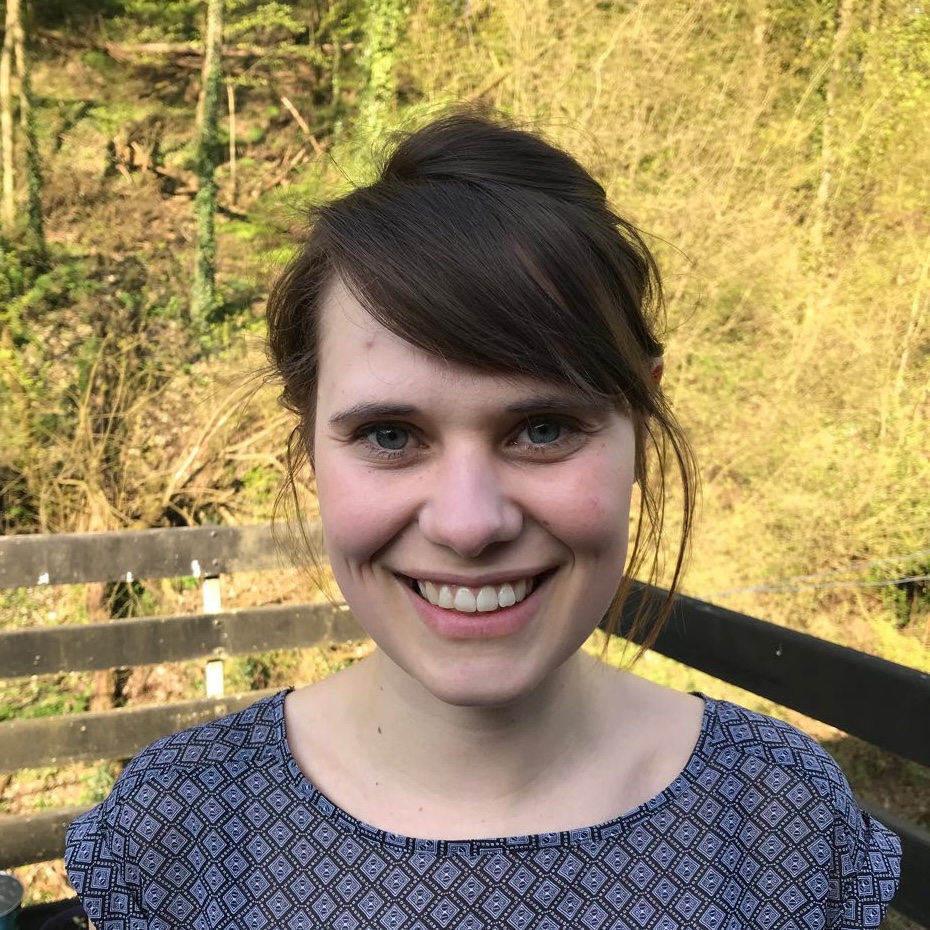
PhD Student
Nuclear deformation by microtubule molecular motors
Naruemon Rueangkham,Miguel Valle-Inclán Cabello,Franziska Lautenschläger,Rhoda J. Hawkins
PLoS Comput Biol 21(5): e1012305 8 May 2025
Link
Cytoskeleton adaptation to stretchable surface relaxation improves adherent cryopreservation of human mesenchymal stem cells
Saskia Altmaier
Cryobiology 25 September 2024
Link
A stretchable human lung‐on‐chip model of alveolar inflammation for evaluating anti‐inflammatory drug response
Clémentine Richter, Lorenz Latta, Daria Harig, Patrick Carius, Janick D. Stucki, Nina Hobi, Andreas Hugi, Paul Schumacher, Tobias Krebs, Alexander Gamrekeli, Felix Stöckle, Klaus Urbschat, Galia Montalvo, Franziska Lautenschläger, Brigitta Loretz, Alberto Hidalgo, Nicole Schneider-Daum, Claus-Michael Lehr
Bioengineering & Translational Medicine September 2024
Link
The structure and mechanics of the cell cortex depend on the location and adhesion state
D. A. D. Flormann, L. Kainka, G. Montalvo, C. Anton, J. Rheinlaender, D. Thalla, D. Vesperini, M. O. Pohland, K. H. Kaub, M. Schu, F. Pezzano, V. Ruprecht, E. Terriac, R. J. Hawkins, and F. Lautenschläger
PNAS July 2024
Link
Soft Synthetic Cells with Mobile Membrane Ligands for Ex Vivo Expansion of Therapy-Relevant T Cell Phenotypes
Anna Burgstaller, Nils Piernitzki, Nadja Küchler, Marcus Koch, Thomas Kister, Hermann Eichler, Tobias Kraus, Eva C. Schwarz, Michael L. Dustin, Franziska Lautenschläger, Oskar Staufer
Small May 2024
Link
Engineering Material Properties of Transcription Factor Condensates to Control Gene Expression in Mammalian Cells and Mice
Alexandra A.M. Fischer, Hanah B. Robertson, Deqiang Kong, Merlin M. Grimm, Jakob Grether, Johanna Groth, Carsten Baltes, Manfred Fliegauf, Franziska Lautenschläger, Bodo Grimbacher, Haifeng Ye, Volkhard Helms, Wilfried Weber
Small April 2024
Link
PIEZO1‐mediated mechanosensing governs NK‐cell killing efficiency and infiltration in three‐dimensional matrices
Archana K. Yanamandra, Jingnan Zhang, Galia Montalvo, Xiangda Zhou, Doreen Biedenweg, Renping Zhao, Shulagna Sharma, Markus Hoth, Franziska Lautenschläger, Oliver Otto, Aránzazu del Campo, Bin Qu
European Journal of Immunology January 2024
Link
Extracellular vimentin: Battle between the devil and the angel
Divyendu Goud Thalla,Franziska Lautenschlaeger
Current Opinion in Cell Biology October 2023
Link
IL-3 receptor signalling suppresses chronic intestinal inflammation by controlling mechanobiology and tissue egress of regulatory T cells
K Ullrich, J Derdau, C Baltes, G Rosso, S Uderhardt, L L Schulze, L J Liu, M Dedden, M Spocinska, L Kainka, M Kubánková, T M Müller, N M Schmidt, E Becker, I Atreya, S Neurath-Finotto, I Prots, B Weigmann, R López-Posadas, R Atreya, A B Ekici, F Lautenschläger, J Guck, M F Neurath, S Zundler
Gut August 2023
Link
A low-cost alternative method of generating fibronectin micropatterned lines for cellular applications
Johanna Elisabeth Becher, Franziska Lautenschläger and Divyendu Goud Thalla
Methods X June 3, 2023
Link
Amoeboid Cell Migration through Regular Arrays of Micropillars under Confinement
Zeinab Sadjadi, Doriane Vesperini, Annalena M. Laurent, Lena Barnefske, Emmanuel Terriac, Franziska Lautenschläger and Heiko Rieger
Biophysical Journal December 6, 2022
Link
Distinct speed and direction memories of migrating dendritic cells diversify their search strategies
M. Reza Shaebani, Matthieu Piel, Franziska Lautenschläger
Biophysical Journal September 30, 2022
Link
Cytoskeletal vimentin regulates cell size and autophagy through mTORC1 signaling
Ponnuswamy Mohanasundaram, Leila S Coelho Rato, Mayank Modi, Marta Urbanska, Franziska Lautenschläger, Fang Cheng, John E Eriksson
PLOS Biology September 13, 2022
Link
Effects of vimentin on the migration, search efficiency, and mechanical resilience of dendritic cells
M. Reza Shaebani, Luiza Stankevicins, Doriane Vesperini,Marta Urbanska,Daniel A.D.Flormann,Emmanuel Terriac,Annica K.B.Gad,Fang Cheng,John E.Eriksson,Franziska Lautenschläger
Biophysical Journal 2 September 2022
Link
Actin stabilization in cell migration
Carsten Baltes, Divyendu Goud Thalla, Uli Kazmaier and Franziska Lautenschläger
Front. Cell Dev. Biol. 11 August 2022
Link
Extracellular vimentin is expressed at the rear of activated macrophage-like cells: Potential role in enhancement of migration and phagocytosis
Divyendu Goud Thalla, Ashish Chand Rajwar, Annalena Maria Laurent, Johanna Elisabeth Becher, Lucina Kainka and Franziska Lautenschläger
Front. Cell Dev. Biol., 18 July 2022
Link
Metastasising Fibroblasts Show an HDAC6-Dependent Increase in Migration Speed and Loss of Directionality Linked to Major Changes in the Vimentin Interactome
Caroline A. Evans, Hyejeong Rosemary Kim, Sarah C. Macfarlane, Poppy I. A. Nowicki, Carsten Baltes, Lei Xu, Jerker Widengren, Franziska Lautenschläger, Bernard M. Corfe and Annica K. B. Gad
Int.J.Mol.Sci 10 February 2022
Link
Fortgeschrittenenpraktikum Physik: Lebende Zellen in Microfluidic-Kanälen Dieses Fortgeschrittenenpraktikum soll Sie an die Arbeitsweisen in einem biophysikalischen Labor heranführen. Ziel des Experiments ist es, die Rolle von Myosin II bei der amöboiden Migration zu bewerten. Wir bitten Sie darum, sich vor dem Experiment bei uns anzumelden, um einen Film über die Experimente zu sehen. In diesem Film werden die Experimente beschrieben, für die Sie selbst keine Zeit haben und welche wir im Voraus für Sie erledigt haben.
Fortgeschrittenenpraktikum Physik: Zellpolarität Orientierung von Zellorganellen kommen sehr häufig in der Natur vor, beispielsweise bei Nervenzellen zur Reizübertragung oder bei Darmzellen zum Stofftransport ins Blut. Zellen, die eine solche Funktionalität verleihende Organisation besitzen, bezeichnet man als polar. Dieses Fortgeschrittenenpraktikum behandelt die Polarität der Zellen in Abhängigkeit von Ihrer Form.
WS 2022/23
SS 2023
WS 2023/24
Prof. Dr. Franziska Lautenschläger
Campus D2 2, 66123 Saarbrücken
+49 681 9300 460
f.lautenschlaeger(at)physik.uni-saarland.de
Stephanie Victoria Uhrig
stephanie.uhrig(at)uni-saarland.de
Tel.:+49 (0) 681 302-68555
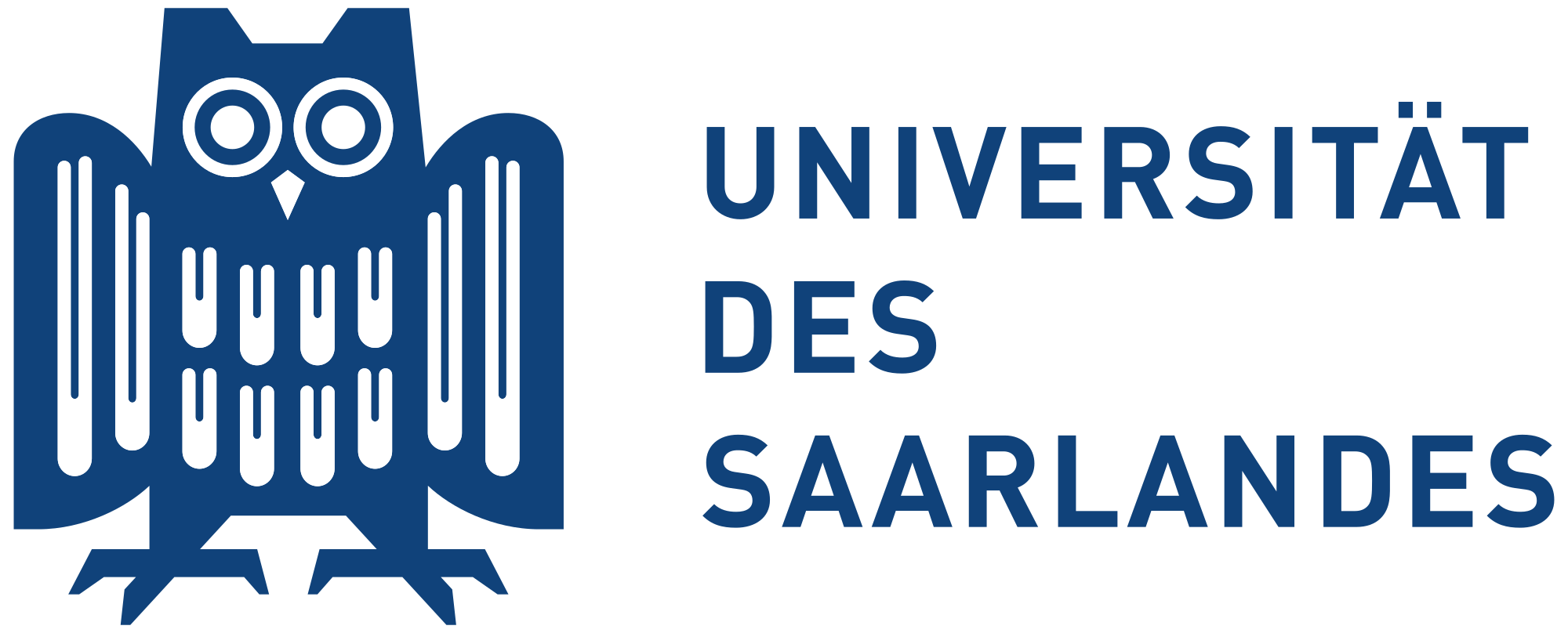

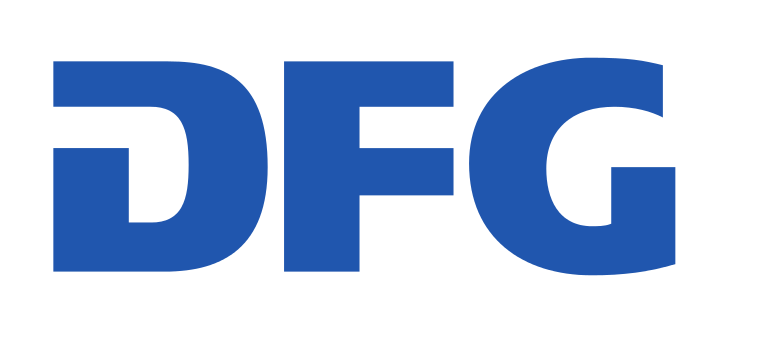
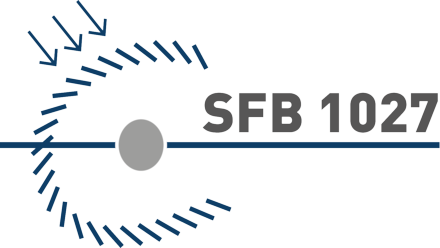

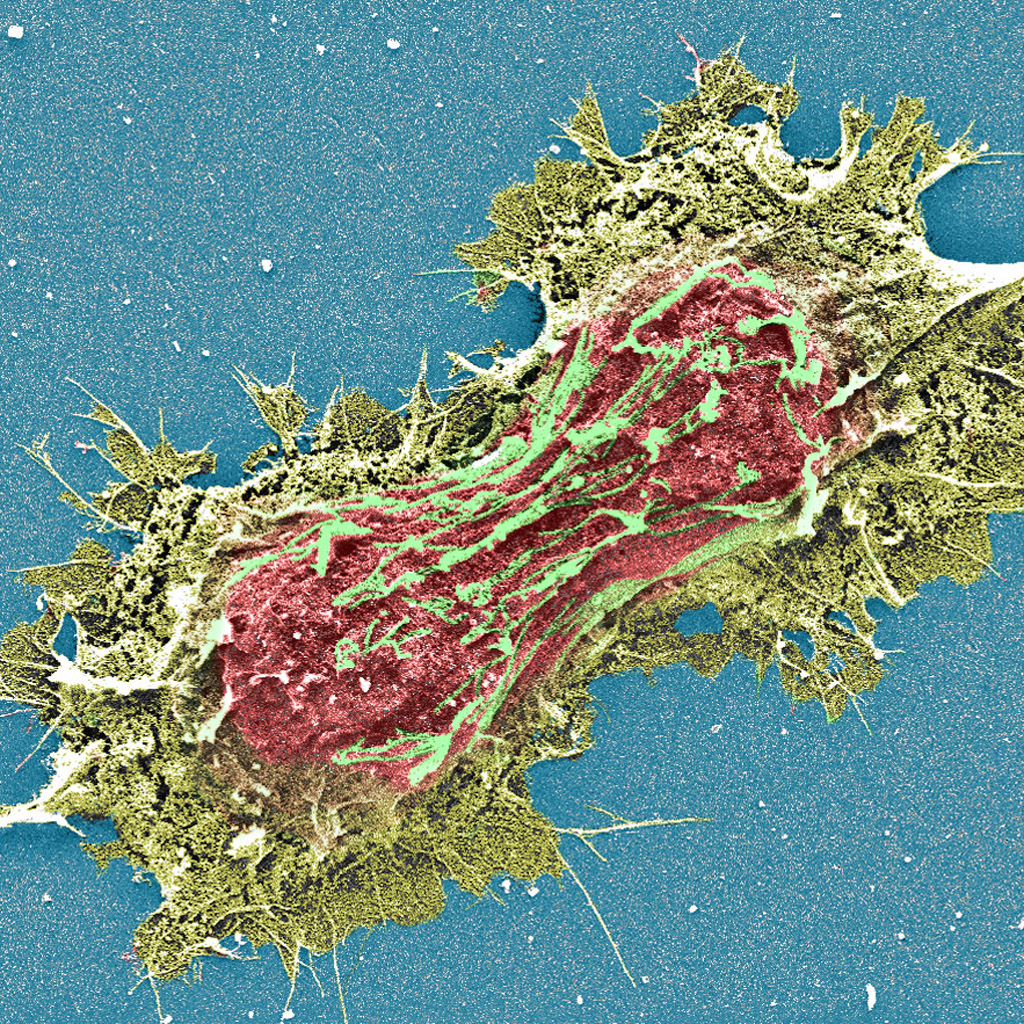
.png)
